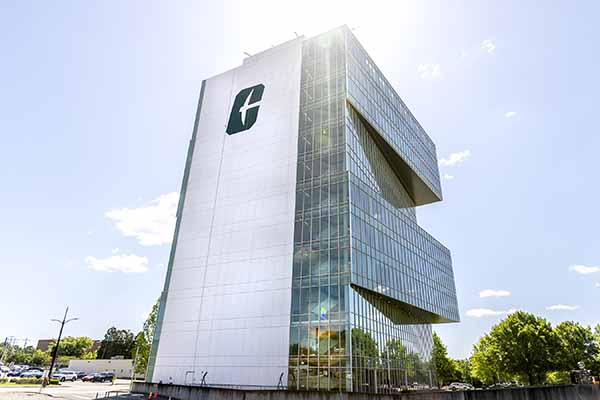
Construction of new buildings is essential to UNC Charlotte’s rapid growth, but the long-term sustainability of the campus depends on the quality of those buildings. To guide high-performance design, the University’s Facilities Management Advisory Council adopted the goal of pursuing LEED Gold certification for all new construction and major renovation projects on campus larger than 20,000 square feet.
“The design and construction of buildings will affect a century or more of energy, water, material and land use,” said Mike Lizotte, university sustainability officer. “UNC Charlotte built its first LEED Gold building over a decade ago, and this goal challenges us to consistently apply sustainable and efficient technologies to future buildings and renovation projects.”
The University recently updated its design standards and guidelines to ensure consistency and quality in building and infrastructure design. Designers working on campus projects must also meet building codes and regulations.
Some LEED standards are met by the new University guidelines, and the University earns transportation credits for its well-developed bus, train, pedestrian and bike facilities. LEED certification rewards the University for achieving higher levels of performance than the minimum building codes. Performance enhancements can include energy and water efficiency, better indoor air quality and comfort, natural lighting and reducing stormwater impacts.
The LEED Gold goal is being applied to designs for the Burson Building expansion project slated for construction in 2025.
UNC Charlotte has certified the design and construction of 11 buildings, using two systems: Leadership in Energy and Environmental Design and Green Globes. LEED is a certification from the US Green Building Council and includes four levels: certified, silver, gold and platinum. Green Globes is a certification from the Green Building Initiative that has four levels designated by increasing numbers.
Since the first award in 2009, the University has certified the design and construction of 72% of eligible building space based on square footage. For large buildings ( greater than 40,000 square feet) constructed in this era, the University has sought and received certification for 11 of 14 new buildings and 78% of eligible constructed space.